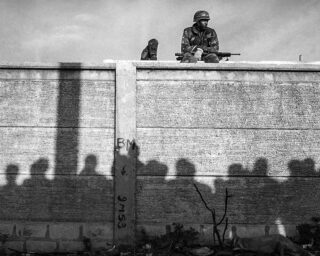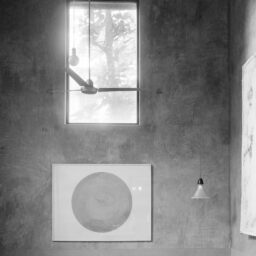Preview: 2014 Aperture Summer Open Exhibition
I am honored to have had the opportunity to select work for Aperture Foundation’s first Summer Open exhibition.
We’ve initiated the Summer Open project as a way to show a wider group of photographers on our walls, and to build and enhance our membership program. As our first open submission exhibition, we had simply no idea what to expect. We are thrilled that 860 photographers presented work—all of whom submitted photographs of a universally high standard. The work of ninety-seven photographers was selected for exhibition. In addition to the single images by each photographer selected for display on the wall, the full series (ten images each) of thirty-three artists were selected for digital projection.
As well as choosing the “best” of the work submitted (of course, flavored by my own taste—the “best” could never be an objective criteria), the aim of this project was also to take the temperature of contemporary photographic practice. Here, the breadth of approaches wasn’t necessarily as wide as I imagined it might be—few photojournalists submitted work, for instance. Perhaps that’s not so surprising; the submissions were “very Aperture,” with most work reflecting a clear relationship to the photography that we are publishing. In this respect, the resulting exhibition reflects a particular bandwidth of contemporary practice, rather than the complete spectrum of the medium. In the end, this helps the exhibition make a clear statement about what concerns serious photographers today, in the range between art and documentary practice.
Some very clear themes emerged, or tropes, which I have turned into a structure for the exhibition: the Forest as Idyll, which seems to be a major thread of what interests photographers; Flowers, a longstanding photographic subject, now being reinvented with a contemporary edge; Ice and Wallpaper, among others; and there’s a section called Reading Faces that features various approaches to portraiture (where I borrowed the section title from a series by featured photographer, Qiren Hu). Some may find my “tagging” of photographs this way overly playful. I certainly could have divided the work in other ways: lots of submissions deal with LGBT and gender issues; many play with photographic spatiality—flatness, and depth; much of the documentary work warns against being taken literally, alerting viewers to read pictures as myth, or fantasy, rather than reality. Each of these could have merited their own sections. I hope the outcome gives some focus to the patterns and preoccupations at work in contemporary photography, and my tagging system is in keeping with the playfulness of much of the work featured.
Photography has become such a sophisticated medium. We all know now how to read influences. Viewers will detect the inspiration of many other photographers who have forged distinct paths in contemporary photography—Alec Soth, Daniel Gordon, and Robert Polidori, to name three particularly visible figures (each of whose practices can of course be traced to figures before them). In this respect, the work selected provides a commentary on the concerns, concepts, and stylistic approaches that define this moment in the medium’s story. Most of the work submitted is highly sophisticated, and self-aware. Compared to a few years ago, it’s clear that the volume of sophisticated work being produced has grown phenomenally—something that speaks in particular to the advances in photographic education. The level of sophistication among the submissions also caused me look in the other direction. I found myself seeking, and in some cases choosing, moments of what I perceive to be photographic innocence—pictures made, apparently, without self-consciousness, driven by more basic visual or compulsive instincts. Innocence is becoming a rare, and desirable, commodity in a medium now characterized by such sophistication.
The work submitted for the exhibition left me with one overwhelming impression that caught me by surprise: that serious photography today, for all its self-awareness and sophistication, is characterized above all by a sense of joy. Serious photography used to be, well, serious—about itself, its place in the world, its social and aesthetic agendas. When did it free itself of these constraints and become so playful? Even the work engaged with complex personal or social issues seems marked by an evident sense of playfulness and pleasure—the creative pleasure of making photographs, delight in the particular characteristics of the medium, and the pure joy of visual articulation. The work on show suggests that photography is at ease with itself in a new way, and its place in the world: full of pleasure, and enjoying every advantage of its freedom.
—Chris Boot
Executive Director























